Physical Address
304 North Cardinal St.
Dorchester Center, MA 02124
Physical Address
304 North Cardinal St.
Dorchester Center, MA 02124
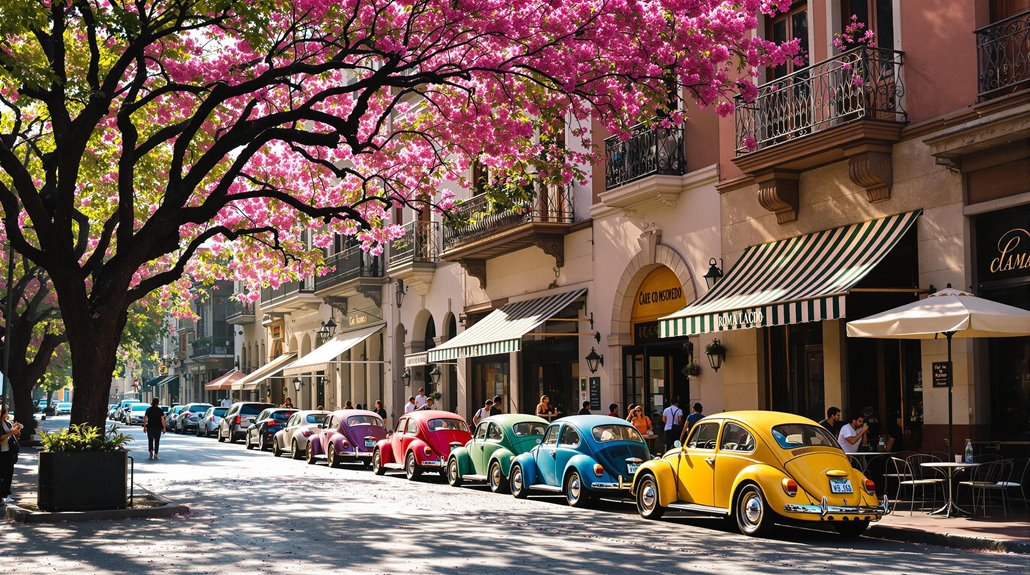
You’ll find endless reasons to explore Mexico City, from its five UNESCO World Heritage sites to its vibrant food scene with 300+ daily markets. The city offers world-class museums showcasing pre-Hispanic artifacts, Diego Rivera’s murals, and Frida Kahlo’s legacy. Experience ancient Aztec ruins, colonial architecture, and modern art galleries, while enjoying over 5,000 annual festivals. With its blend of history and contemporary culture, Mexico City’s treasures await your discovery.
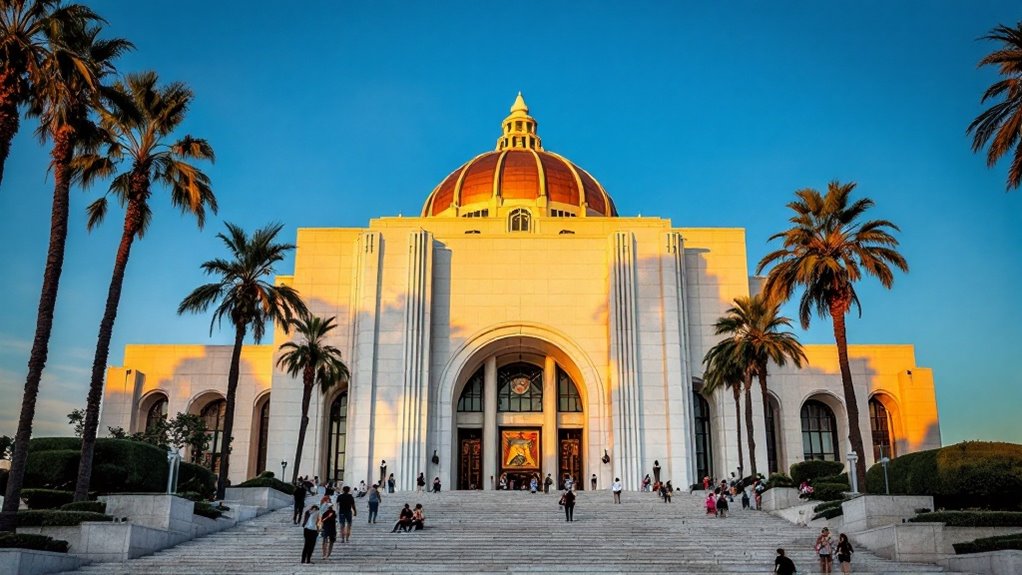
While many global cities boast impressive museums, Mexico City’s cultural institutions stand in a league of their own, offering visitors an unparalleled journey through art, history, and archaeology.
You’ll find world-renowned collections at the National Museum of Anthropology, where over 600,000 pre-Hispanic artifacts tell Mexico’s ancient story. As Mexico’s premier cultural institution, it attracted 3.8 million visitors in 2024, making it the city’s most-visited museum.
The Palace of Fine Arts, with its stunning Art Nouveau architecture, showcases Diego Rivera’s famous murals and hosts the beloved Ballet Folklórico.
Don’t miss the Frida Kahlo Museum, where you can explore the artist’s intimate world in her former home, or the Museo Soumaya’s impressive collection of European masterpieces and Rodin sculptures.
Many travelers now use travel planning apps to efficiently schedule their museum visits and optimize their cultural experience in the city.
These cultural gems are spread across the city’s unique neighborhoods, each adding its own distinctive character to Mexico City’s vibrant art scene.
While some may question if travel breeds cultural understanding, Mexico City’s museums offer genuine insights into the nation’s rich heritage and identity.
With record-breaking visitor numbers across institutions in 2024, you’ll want to plan ahead and book tickets early for these cultural powerhouses.
As centuries of architectural evolution unfold before your eyes in Mexico City, you’ll discover a vast open-air museum where ancient Aztec temples, ornate Spanish colonial churches, and cutting-edge modern structures tell the story of the Americas’ oldest capital.
You can explore over 1,400 colonial buildings in the UNESCO-listed Centro Histórico, where the Metropolitan Cathedral stands atop Aztec ruins, symbolizing the city’s cultural fusion.
Don’t miss the Palacio de Bellas Artes, where Art Nouveau meets Art Deco, or the Casa de los Azulejos’ stunning blend of Moorish tiles and indigenous stonework.
For a glimpse into contemporary design, visit the titanium-clad Museo Soumaya or the innovative Biblioteca Vasconcelos, where suspended shelves create a futuristic reading space.
Similar to Guadalajara Cathedral, Mexico City’s architectural heritage represents the pinnacle of Spanish colonial design in the Americas.
The Gran Hotel Ciudad de México enchants visitors with its magnificent Tiffany stained-glass ceiling, an artistic masterpiece comprising 20,000 pieces of colored glass.
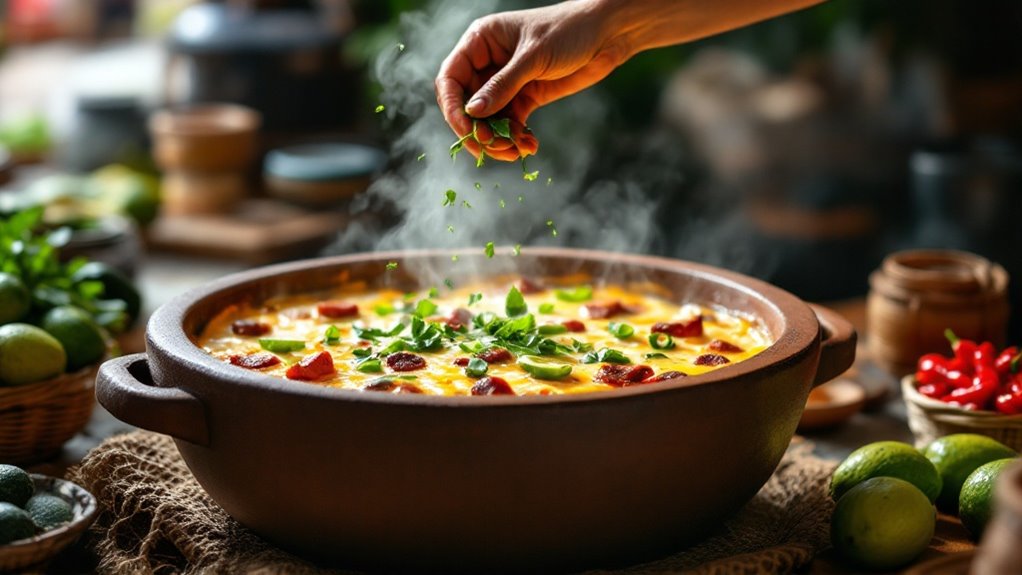
Mexico City’s explosive culinary scene has transformed it into Latin America’s most exciting food destination, where centuries-old traditions meet innovative gastronomy at every price point.
From world-renowned restaurants like Pujol to vibrant street food markets, you’ll discover a culinary landscape that celebrates both heritage and innovation.
Make your dining experiences more environmentally conscious by choosing restaurants that focus on local seasonal ingredients and sustainable practices.
Experience the city’s food culture through these essential experiences:
Don’t miss seasonal events like the National Mole Fair, where you can taste 200+ varieties of Mexico’s complex signature sauce.
The city’s sixteen municipalities each offer distinct culinary traditions and specialties worth exploring.
Few cities in the world seamlessly blend ancient civilization with modern metropolis like you’ll experience in Mexico City, where 700-year-old Aztec ruins stand proudly alongside gleaming skyscrapers.
You’ll find this fascinating contrast at the heart of downtown, where the imposing Templo Mayor ruins sit next to the Metropolitan Cathedral, built using stones from the original Aztec temples.
Just 50 kilometers northeast, you can explore the magnificent pyramids of Teotihuacán, where the 210-foot Pyramid of the Sun offers breathtaking views of the ancient city. Visitors can walk along the ancient Avenue of the Dead to access the site’s most impressive structures.
Standing proud at 210 feet, the Pyramid of the Sun towers over Teotihuacán, offering spectacular views of this ancient marvel.
While many travelers head to coastal regions, Mexico City’s rich history rivals popular destinations like Mayan ruins in Tulum.
Don’t miss Xochimilco’s floating gardens, where you can glide through 170 kilometers of Aztec-era canals on a colorful trajinera boat while witnessing traditional farming methods that have survived for seven centuries.
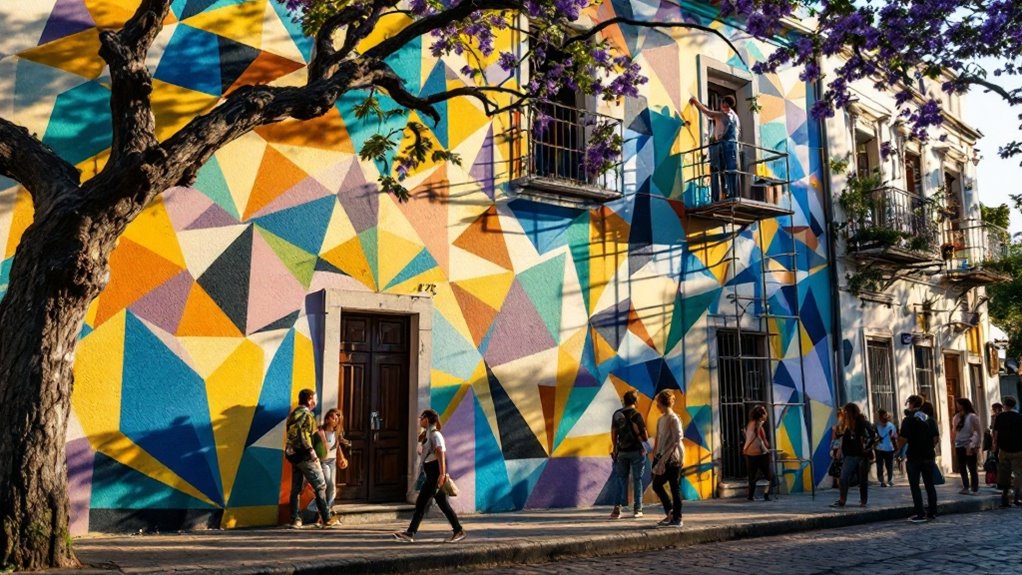
A creative revolution pulses through the heart of this metropolis, where you’ll discover one of Latin America’s most dynamic contemporary art scenes.
From the prestigious Zona Maco art fair to the street art corridors of Roma Norte, you’ll find creativity at every turn. The 140 exhibitors make Zona Maco’s 20th edition a must-see destination for art enthusiasts. The city’s galleries, like Kurimanzutto and OMR, showcase both international stars and emerging local talents.
Don’t miss these art-focused experiences:
The arts scene extends beyond traditional spaces into repurposed venues like Laguna’s converted 1920s factory, now home to dozens of working artists.
Nestled in the bustling heart of Latin America’s largest metropolis, Chapultepec Park stands as one of the Western Hemisphere’s largest urban green spaces, offering visitors an enchanting escape from city life.
You’ll find Mexico’s most important museum, the National Anthropology Museum, alongside the historic Chapultepec Castle, the only royal castle in North America.
On weekends, you can join locals for free outdoor concerts, rent paddleboats on two scenic lakes, or explore 4 km of jogging trails.
The park’s three distinct sections house over 165 tree species, including ancient Montezuma cypresses planted by the Aztecs.
Majestic Montezuma cypresses, living witnesses to Aztec times, stand among hundreds of diverse tree species in Chapultepec’s verdant sections.
The beloved Audiorama Sound Bath provides a tranquil sanctuary for meditation and relaxation amid the park’s natural surroundings.
For the best experience, arrive early on weekday mornings to avoid crowds, and don’t miss the free museum admission on Sundays.
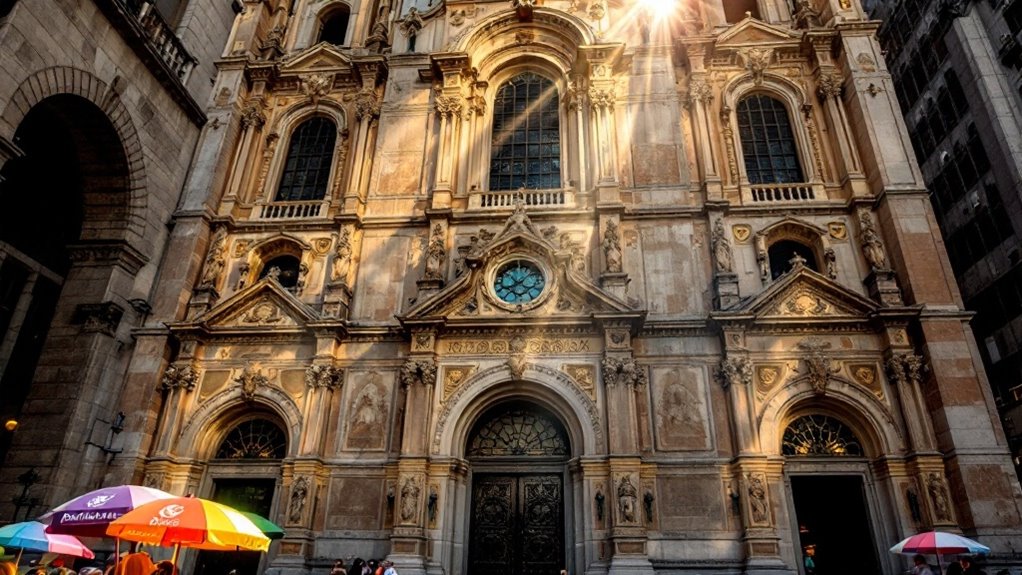
Mexico City’s five UNESCO World Heritage Sites stand as living monuments to the region’s rich cultural heritage, offering visitors an unparalleled journey through centuries of human achievement.
You’ll discover these magnificent sites throughout the metropolis and its surroundings, each telling a unique story of Mexico’s past and present.
Don’t miss these three remarkable UNESCO treasures:
From baroque churches adorned with indigenous motifs to 16th-century monasteries on Popocatépetl’s slopes, you’ll find yourself surrounded by centuries of architectural brilliance.
The Historic Centre showcases an impressive transition from Aztec capital to New Spain, with archaeological sites and colonial buildings perfectly preserving this remarkable evolution.
The ancient waterways of Xochimilco weave a vibrant tapestry of history, culture, and natural beauty through southern Mexico City’s landscape.
You’ll explore this UNESCO World Heritage site aboard colorful trajineras, where you can feast on traditional tlacoyos while mariachi bands serenade you. For the best experience, visit on weekdays to avoid crowds, and don’t forget to negotiate your boat price upfront, typically $20-30 per hour. Much like local short-term rentals, prices can vary significantly depending on timing and demand. While solo travelers should remain vigilant of their surroundings, the canals are generally safe during daylight hours.
As you glide through the canals, you’ll witness the remarkable chinampas, floating gardens that use thousand-year-old Aztec farming techniques. These innovative agricultural plots produce significantly more yield than conventional farming methods. Many local vendors sell traditional foods that follow balanced nutrition principles similar to those found in ancient wellness practices.
While these historic waterways face modern challenges from pollution and urban development, they remain a must-see destination where you can glimpse Mexico’s rich agricultural heritage and join locals in festive weekend celebrations.
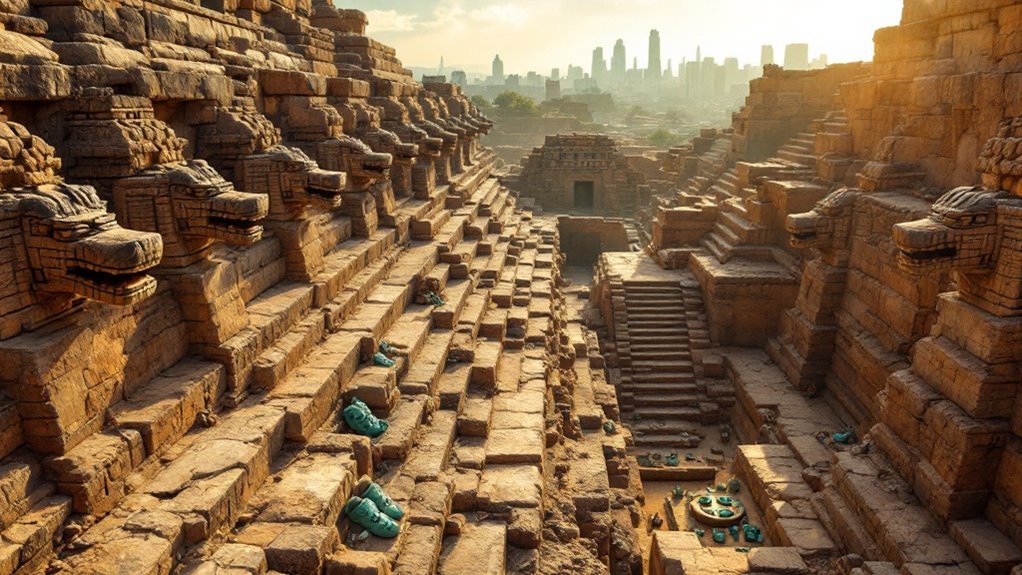
Standing atop centuries of remarkable civilization, modern Mexico City reveals its pre-Hispanic roots at every turn, from the imposing ruins of Templo Mayor to the enduring cultural practices that animate its streets. Visitors often expect a city defined by afternoon tea customs, but discover a vastly different cultural experience.
You’ll discover a city where ancient Aztec traditions blend seamlessly with contemporary life, offering countless opportunities to explore Mexico’s vibrant legacy. While Mexico’s rich history stems from indigenous roots, the city showcases some colonial influence similar to what shaped other Latin American cultures. The city’s rich heritage stems from its origins as Tenochtitlan in 1325, when the Mexica people first established their capital on an island in Lake Texcoco.
Don’t miss these incredible pre-Hispanic experiences:
Whether you’re an art aficionado or casual culture seeker, you’ll find yourself immersed in one of the world’s most dynamic artistic capitals, where centuries of creative expression blend seamlessly with cutting-edge contemporary works.
From ancient treasures to modern masterpieces, this cultural powerhouse invites both connoisseurs and curious minds to explore its artistic soul.
You can explore world-class institutions like the National Museum of Anthropology, housing over 600,000 pre-Hispanic artifacts, or marvel at Latin America’s largest private contemporary art collection at Museo Jumex.
Don’t miss the iconic Frida Kahlo Museum in her former home, La Casa Azul, or the futuristic Museo Soumaya with its impressive Rodin collection.
For a deeper exploration into the local art scene, you’ll want to visit cutting-edge galleries like Kurimanzutto and MASA Galería, while the vibrant street art in La Roma neighborhood and rotating installations at Zócalo square showcase the city’s creative energy at every turn. Mexico City’s street art tells compelling stories of its cultural heritage. With over 150 museums, Mexico City offers an unparalleled concentration of artistic venues to explore.
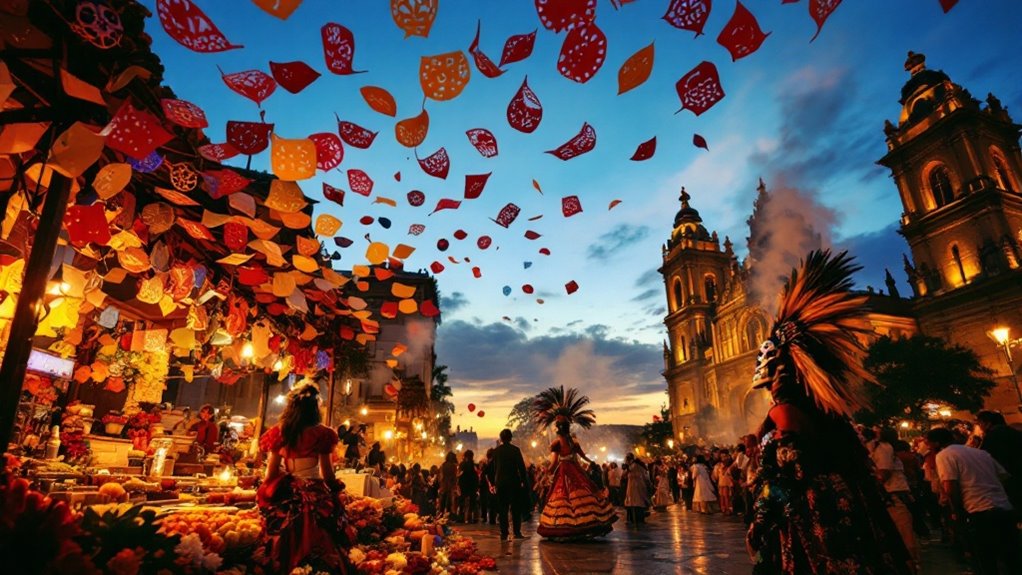
Throughout the year, Mexico City pulses with an extraordinary lineup of festivals and cultural celebrations that transform its streets, plazas, and venues into vibrant stages of artistic expression.
You’ll find yourself immersed in events that showcase the city’s cultural legacy and contemporary culture, from the haunting beauty of Día de Muertos to the pulsating rhythms of major music festivals. The city hosts an astounding over 5,000 festivals annually.
Don’t miss these signature events that define Mexico City’s cultural calendar:
At the very heart of Mexico City’s historic center lies the magnificent Zócalo, a vast plaza that’s witnessed over 700 years of the nation’s most pivotal moments.
You’ll find yourself surrounded by architectural marvels, including Latin America’s largest cathedral built from Aztec temple stones and the Palacio Nacional, where Diego Rivera’s stunning murals await.
Don’t miss the Templo Mayor ruins, discovered in 1978, which offer a fascinating glimpse into the plaza’s Aztec origins. The plaza is also where the famous Aztec Calendar stone was discovered, now displayed at the National Museum of Anthropology.
Unearthed in 1978, the sacred Templo Mayor reveals the ancient heartbeat of Aztec civilization beneath Mexico City’s streets.
Time your visit to catch the daily flag ceremonies at the 50-meter central flagpole, or plan ahead for major celebrations like Independence Day in September.
While exploring, you’ll notice the plaza’s rich layers of history, from its ancient ceremonial roots to its current role as the nation’s primary gathering space for cultural events and political expression.
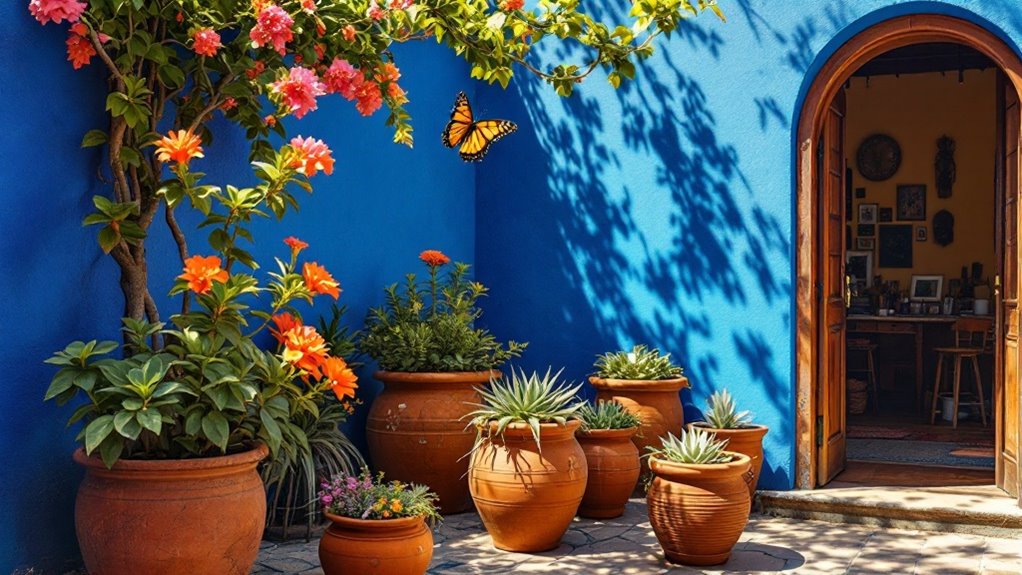
Passion radiates from every corner of La Casa Azul, Frida Kahlo’s iconic blue-walled sanctuary in the charming Coyoacán neighborhood.
Originally constructed in 1904 with French-style features, the house has evolved into a testament to Mexican artistic heritage.
As one of Mexico City’s most visited cultural sites, this preserved museum offers you an intimate glimpse into the artist’s extraordinary life through her original living spaces, artwork, and personal belongings.
You’ll discover three compelling reasons to explore this artistic haven:
With over 25,000 monthly visitors, you’ll want to plan ahead to fully learn about this tribute to Mexico’s most celebrated female artist.
Mexico City’s architectural tapestry weaves together centuries of history, as colonial-era masterpieces stand proudly alongside ultramodern landmarks.
You’ll find this contrast at every turn, from the Palacio Nacional’s Spanish Colonial design with Rivera’s murals to the futuristic curves of Museo Soumaya. In the Historic Centre, you can explore UNESCO-listed treasures where Aztec ruins merge seamlessly with colonial buildings.
The city’s cultural spaces perfectly capture this fusion of old and new. Visit the Palacio de Bellas Artes, where Art Nouveau exteriors blend with Art Deco interiors, or explore Roma and Condesa’s streets, where Art Nouveau mansions house minimalist cafés. This vibrant area is always bustling with street life and culture, from local rap battles to breakdancers entertaining passersby.
Don’t miss Chapultepec Castle, an 18th-century architectural gem that offers both modern exhibits and spectacular city views.
You’ll find the best time to visit Mexico City is March through May, when you can enjoy mild temperatures around 75°F, minimal rain, low humidity, and blooming jacaranda trees while exploring outdoor attractions.
Picture yourself strolling through vibrant Condesa’s tree-lined streets. You’ll be safe as a solo female traveler in Mexico City if you stick to well-lit tourist areas and take standard precautions like using tracked transportation.
You’ll need at least 4-5 days to explore Mexico City’s essentials, but aim for 7 days to fully experience the culture, museums, and neighborhoods. Add extra days if you’re planning day trips like Teotihuacan.
Like a fish learning to swim, you’ll manage without Spanish, but knowing basic phrases helps. You’ll find English speakers in tourist areas, but learning “gracias” and “por favor” will make your journey smoother.
You’ll find the Metro system most convenient for neighborhood hopping. It’s cheap, extensive, and well-connected. For areas without Metro access, use Metrobús or ride-hailing apps like Uber and Didi.
Mexico City’s dynamic fusion of history, culture, and modernity will captivate you at every turn. You’ll discover why experts believe this metropolis is poised to become the next global cultural capital, as it masterfully blends ancient traditions with contemporary innovation. From world-class museums to street-side taquerias, and from Aztec ruins to art deco masterpieces, Mexico City offers an unmatched urban experience that’ll transform your perspective on Latin America.